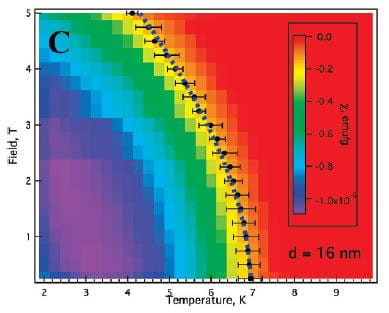Superconducting Nanoparticles
Superconductivity is a fantastic property. At some temperature, electrons flow without resistance, forever. Below the superconducting transition temperature, electrons anti-correlate strongly their motions in pairs. As a result, scattering cannot change their center of mass motion. At present the temperature of superconductors is about half way to absolute zero. This makes it difficult to use on a large scale. A long term goal of research in superconductivity is to raise the superconducting temperature to room temperature. This would have enormous practical consequences, for energy efficiency and storage.
We investigate the superconducting properties of nanostructures. As the electrons are confined is a small volume, the interaction changes. Some of the effect of confinement might help, such that having more electrons at the same energy, or the increase of the electron-phonon coupling, while others hurt such as the net decrease of the number of electrons. Our experiments are done with colloidal nanomaterials that are known to be superconductors in the bulk. For example, 16 nm diameter Pb nanoparticles exhibit the Meissner effect at a temperature similar to bulk Pb (~7K) but it subsists until ~ 100 times larger magnetic field.




